Modern Rodding TECH
InTheGarageMedia.com
MASK(ED) MAN
How a Few Hours Spent in Prep Can Spare Thousands of Dollars Lost to Paint Corrections
By Chris Shelton  Photography by Brian Brennan, Glenn Sinon, & Chadly Johnson
Photography by Brian Brennan, Glenn Sinon, & Chadly Johnson
f you’re like me, you learned that masking keeps color from going places where it wasn’t supposed to go. If that’s the case, we have great news: You’re right.
But if that’s all you thought masking was good for, you’re only half right. Masking also protects the surfaces that you’re painting. If you’ve ever blown dust into a freshly painted surface while spraying rockers or ’jambs, you know exactly what I’m talking about.
“So, masking has two folds to it,” collision-tech instructor and former PPG rep Glenn Sinon says. “One is that you do not want the paint that you are spraying to go where it shouldn’t go. You’re trying to mask everything off so that none of it gets on any other surface. But masking also prevents the sprayed paint from dislodging dust and debris that settles in a vehicle during construction,” he adds. “I don’t care how much cleaning and scrubbing and blowing out that you do, you never get it all. Whatever you don’t get ends up in the paint you just sprayed.”
We reached out to a few shops renowned for their finish quality to show us just how they employ masking to protect painted surfaces. They include the Hot Rods By Dean crew (Ken Hill and Ken “Spike” Ackman) who prepped the ’65 Chevelle, Tony Curiel at MetalWorks Classics and Restoration in Eugene, Oregon, who prepped the ’55 Chevy, and Sinon who showed us how he masked his ’72 Maverick for graphics.
“By doing a lot of very effective masking and taping you can minimize the amount of debris that ends up in your paint,” he maintains. “The less debris that lands in your paint, the better the job will turn out and the less work you’ll have to do.”
Shop for masking film and you’ll face two choices: paper or plastic—neither material is objectively better than the other. The only thing that has the potential to make one better than the other is the application.
Historically speaking, paper was the gold standard for masking films. It’s a renewable and recyclable material that just happens to isolate surfaces very well.
Paper-based masking film isn’t just paper, though; manufacturers coat it, usually with polyethylene or polypropylene to block solvents from bleeding through. MetalWorks uses Norton’s Paint Check, which has a surface treatment that attracts paint and holds it from flaking off.
Poly-based films dispense with the paper entirely. These gossamer-thin films readily conform with very little effort. Because these films unfold into tarp-sized sheets, they can cover a vehicle entirely.
“I grew up in a body shop so I’m a plastic guy,” Glenn says. “With the paper, you end up with a lot of folds. Well, those folds are gonna trap dust that blows back out when air hits it, thereby making your finish that much dustier.
“This stuff also has a coating on one side so you can spray right onto it and everything sticks.”
Yet Glenn used a paper-based film for the interior masking. “In the interior it was a lot easier to use the paper. I could rip a 6-foot section of it and push it in there,” he says. “Trying to bag all that with plastic sheeting would’ve been a nightmare.”
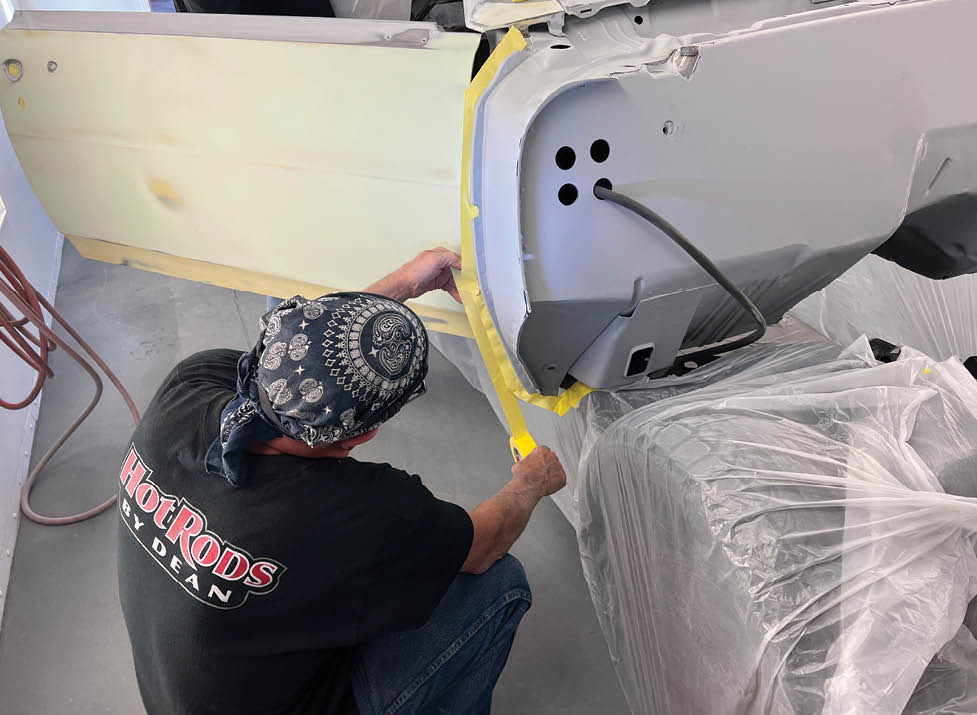



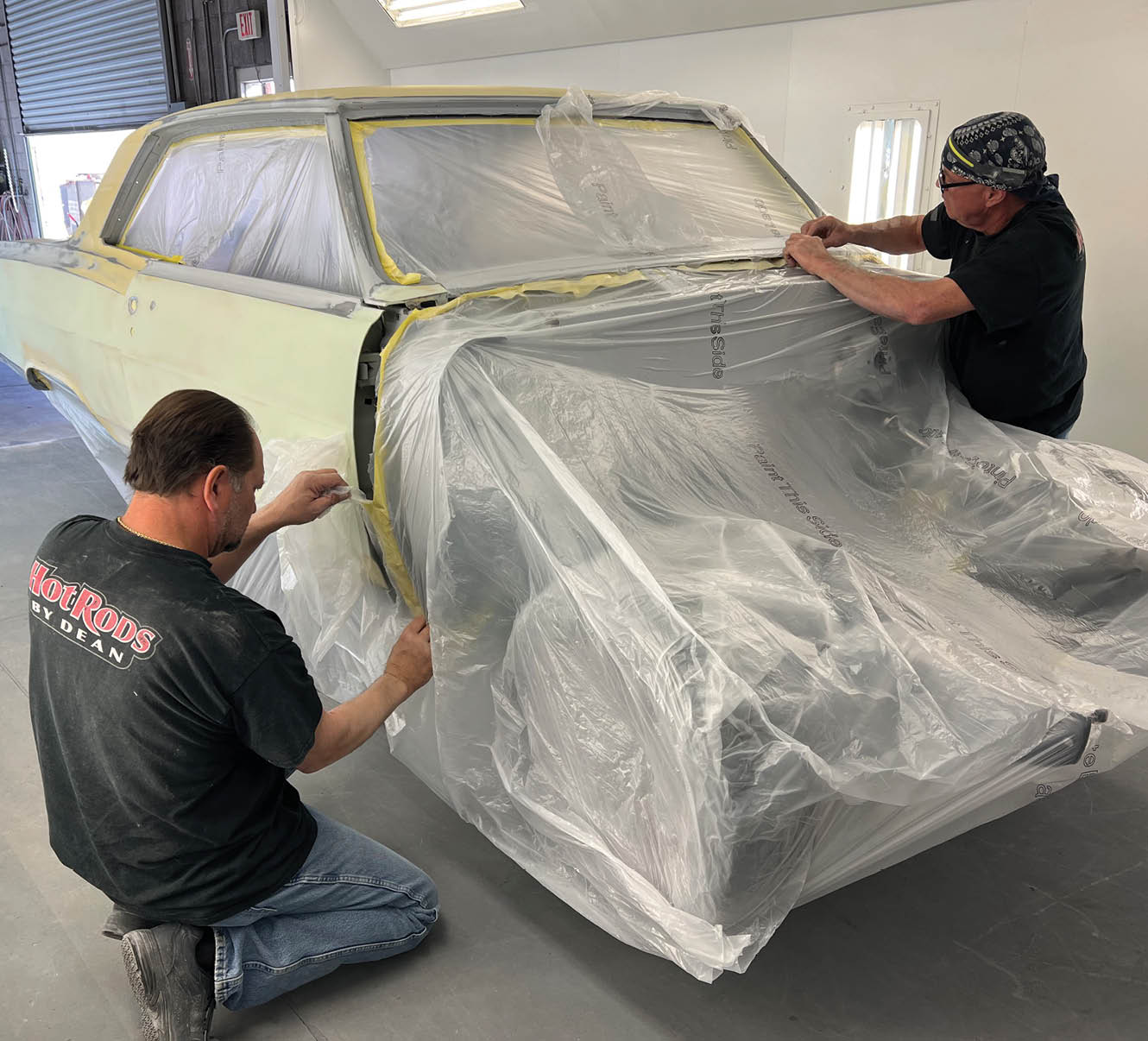


8. He then chased the perimeter with more paper tape. This isolates the inside of the door and the door’s jamb from the perilously dusty interior.
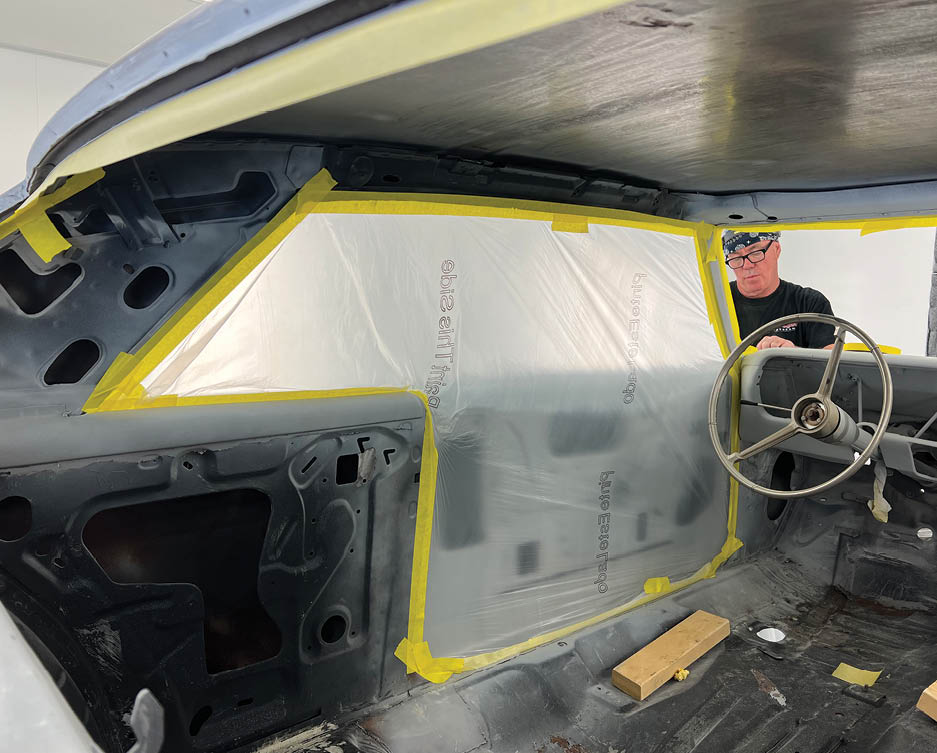
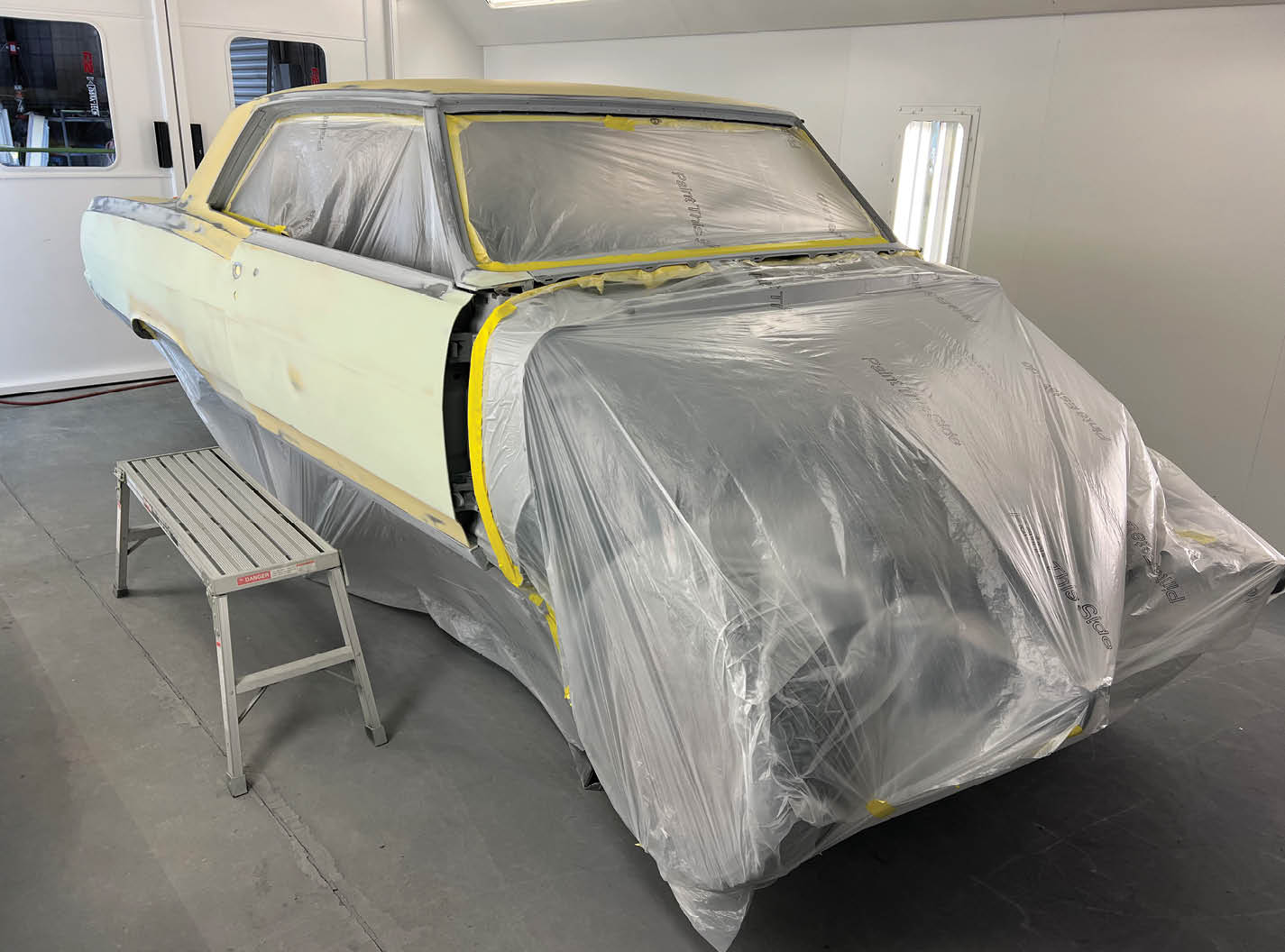
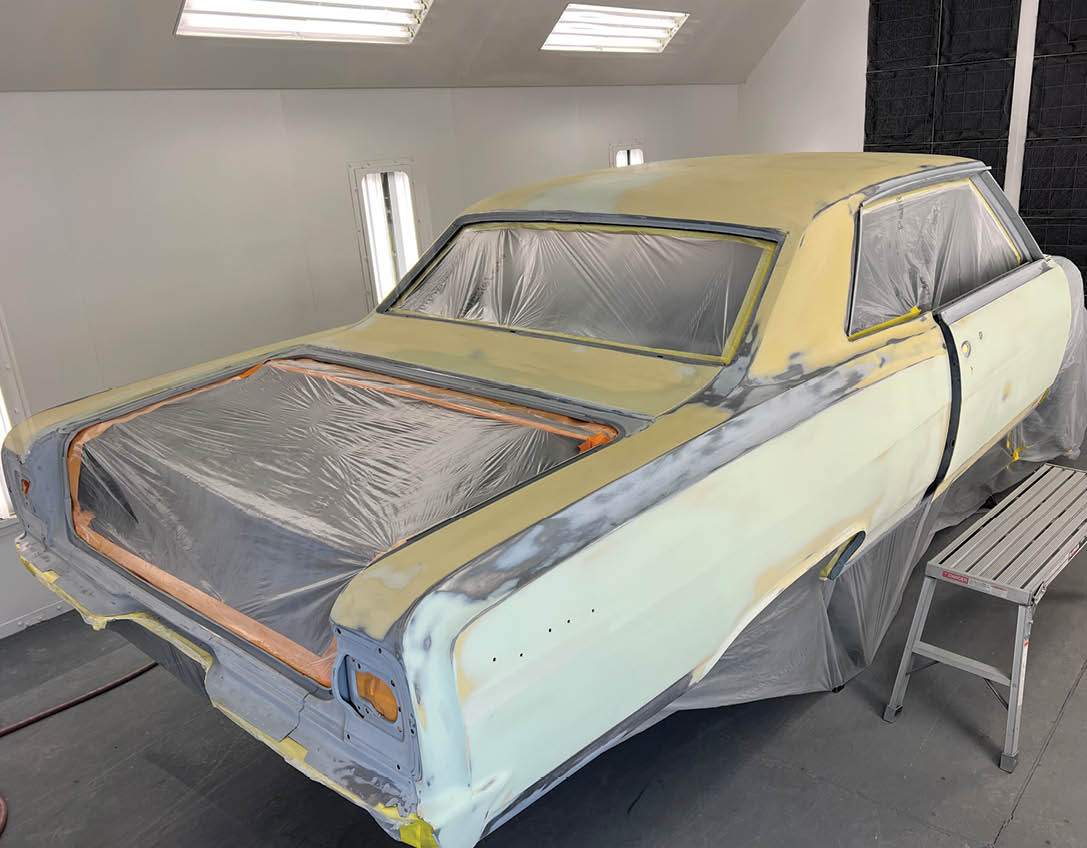
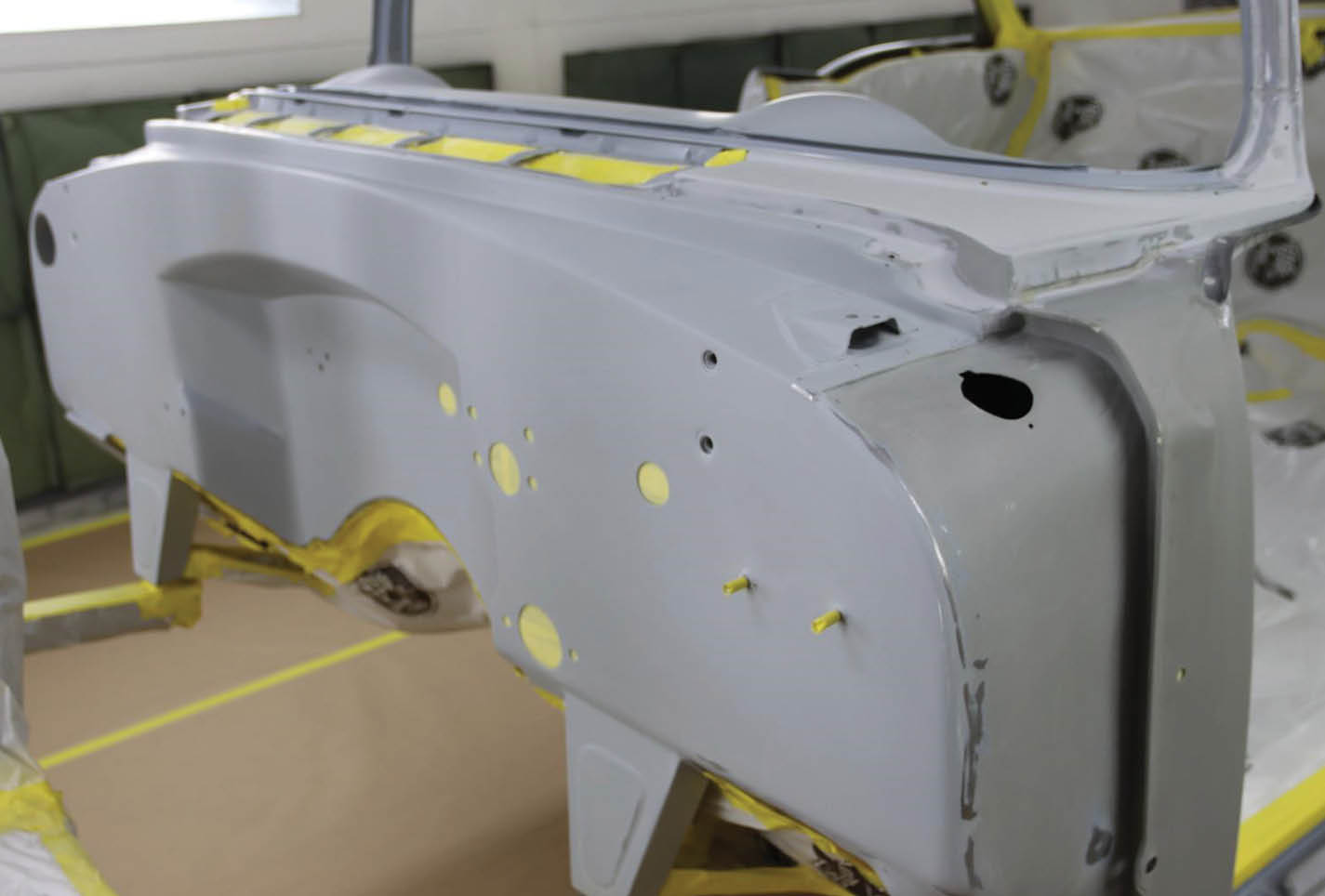
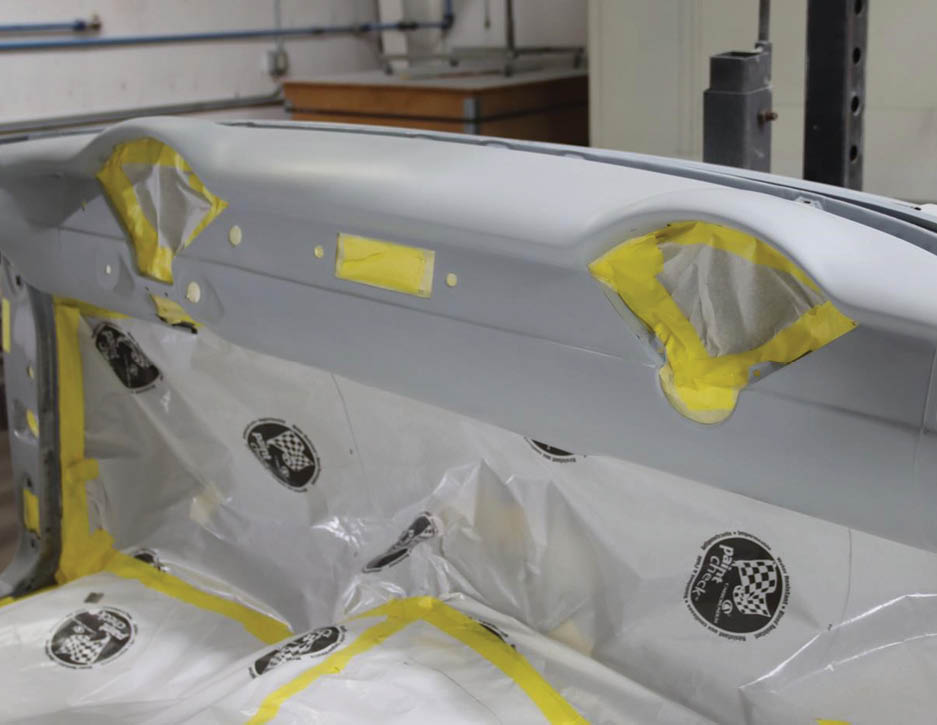
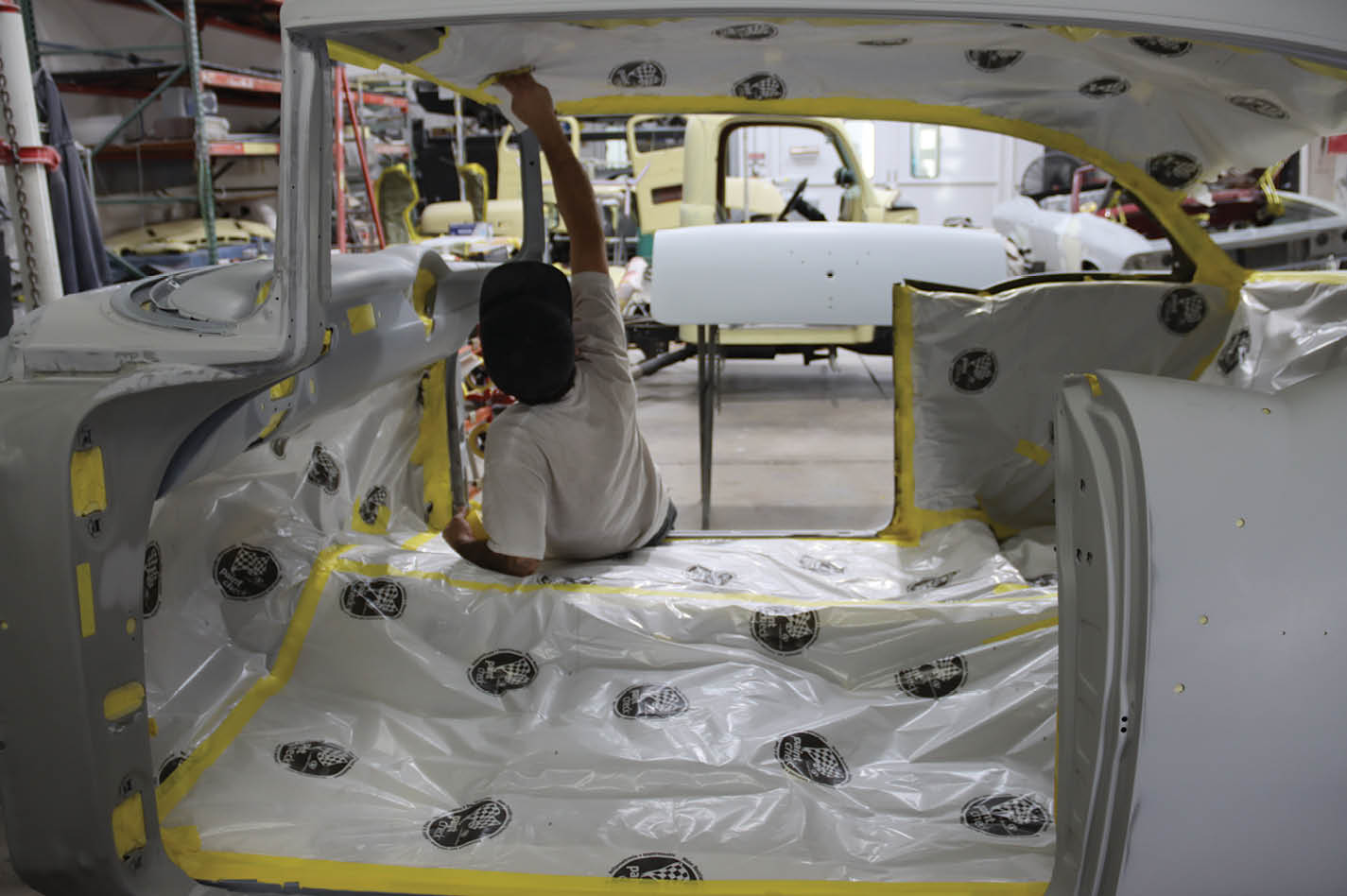
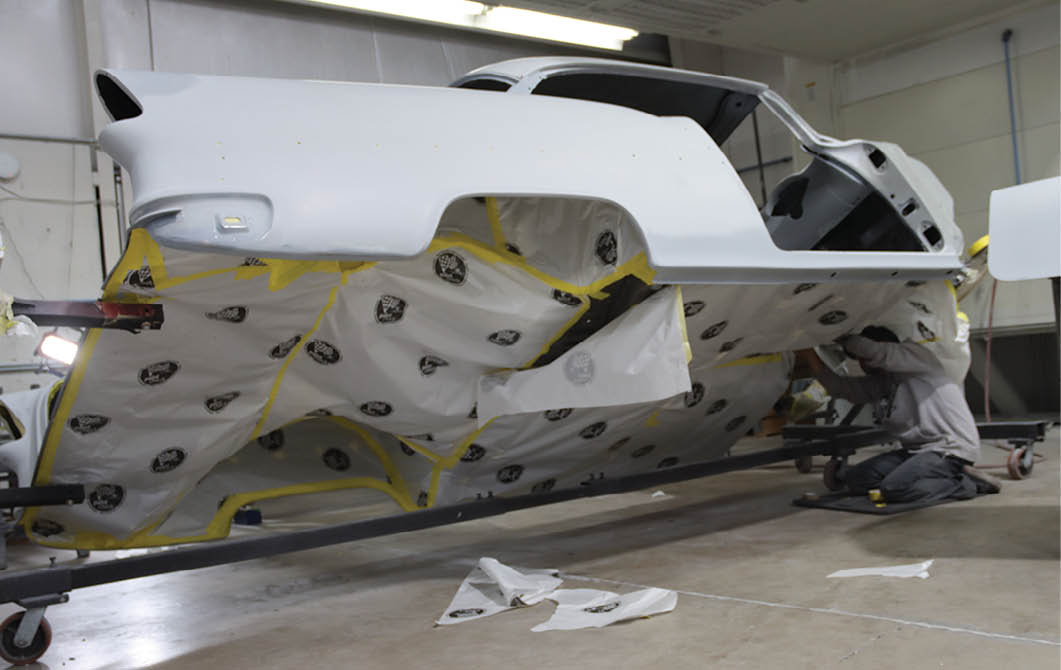
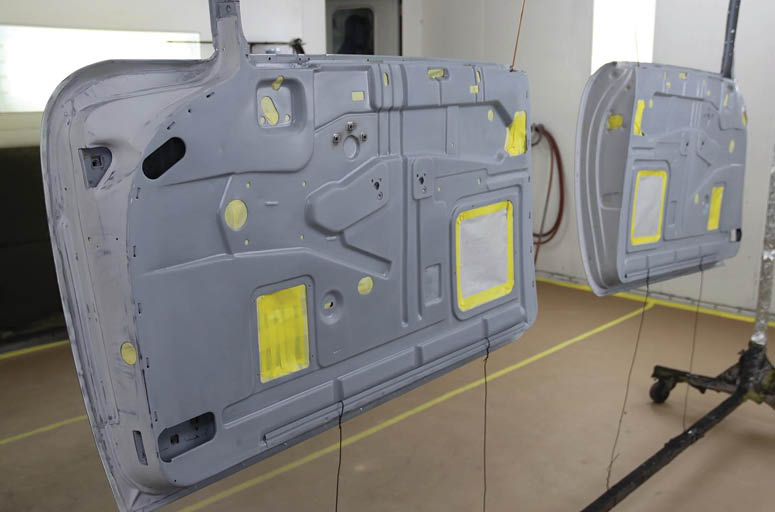

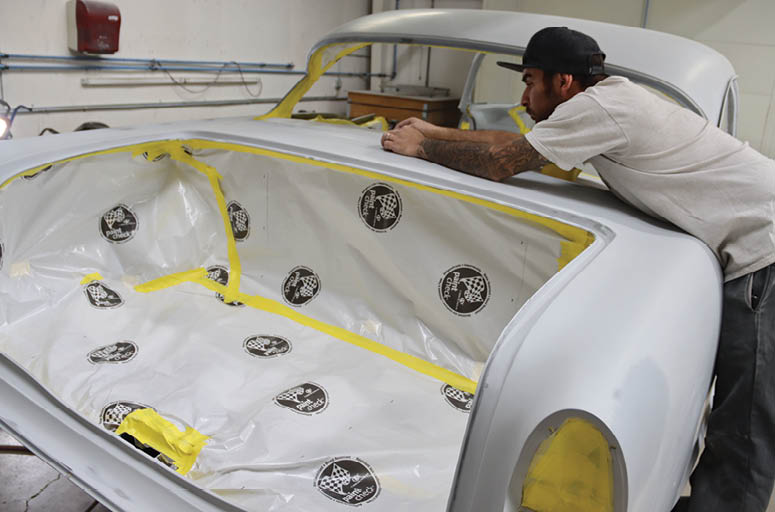

His is a next-level technique that makes it easier to apply, alter, and remove masking. First, he tapes off the hard lines (where the paint ends) with vinyl. But then he overlaps most of that tape with a wider strip of paper tape. The reason? It’s a lot easier to land the masking film on a wide line than it is on a narrow one. That way he can remove masking separately from the tape that defines the edge.
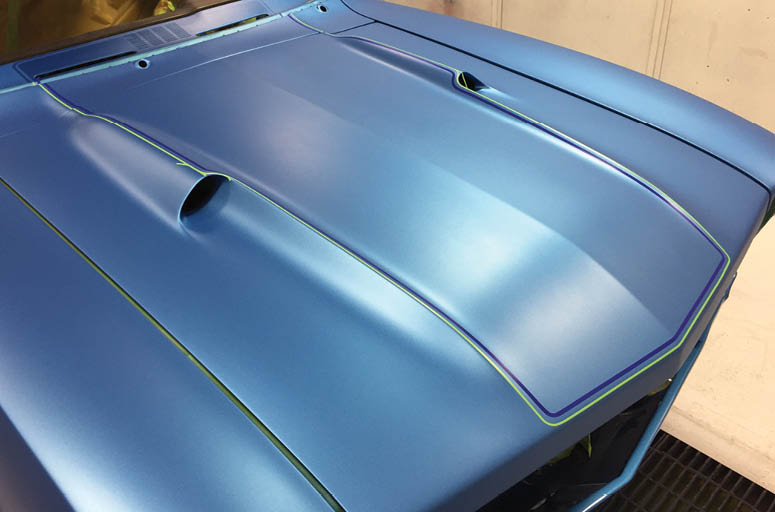
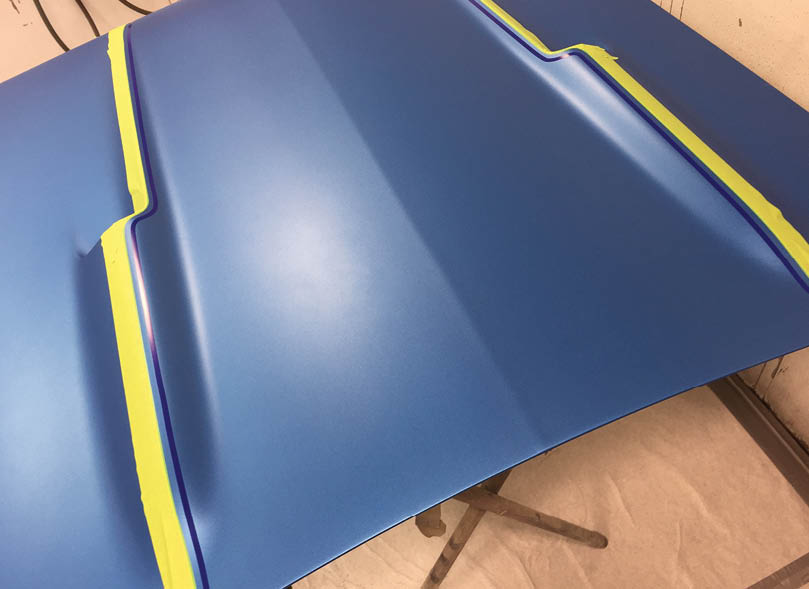
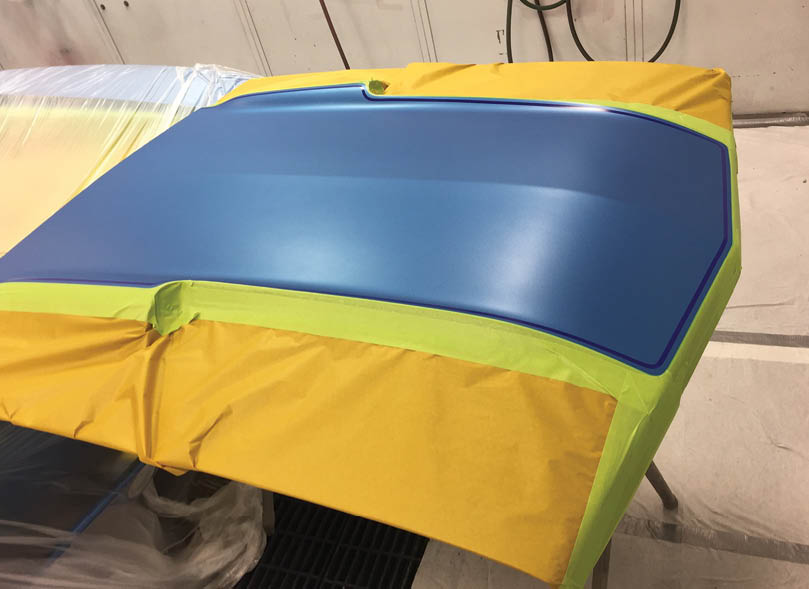

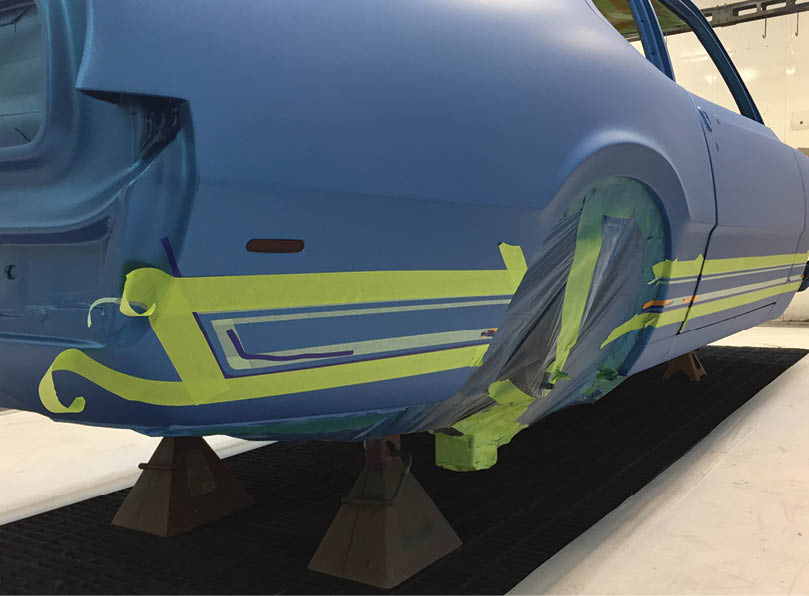
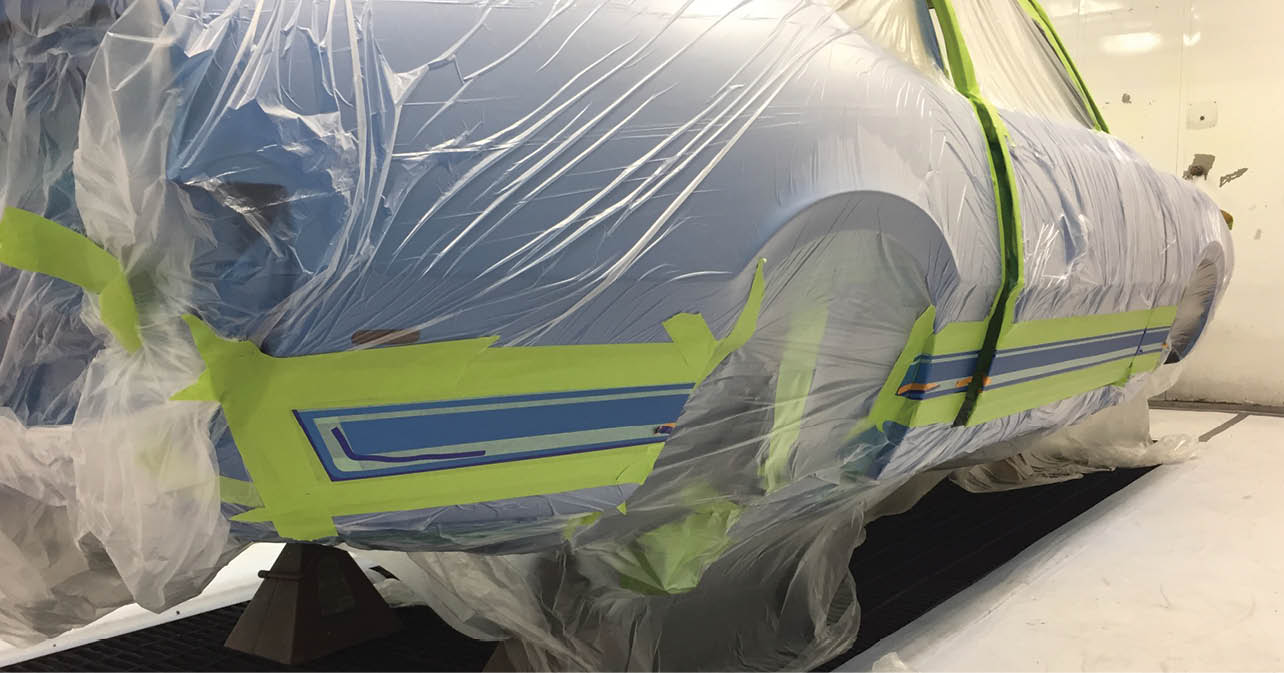
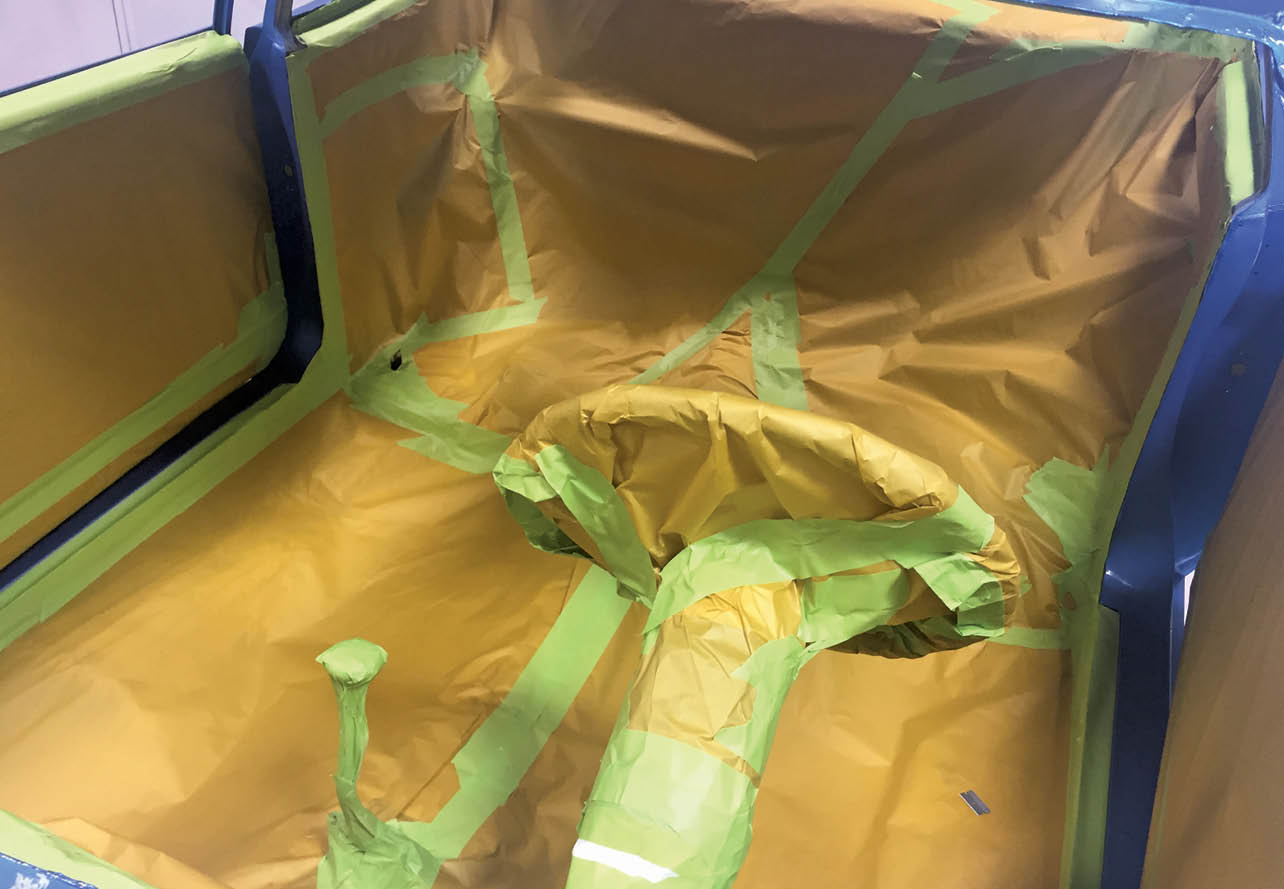
 SOURCES
SOURCESVOLUME 4 • ISSUE 32 • 2023